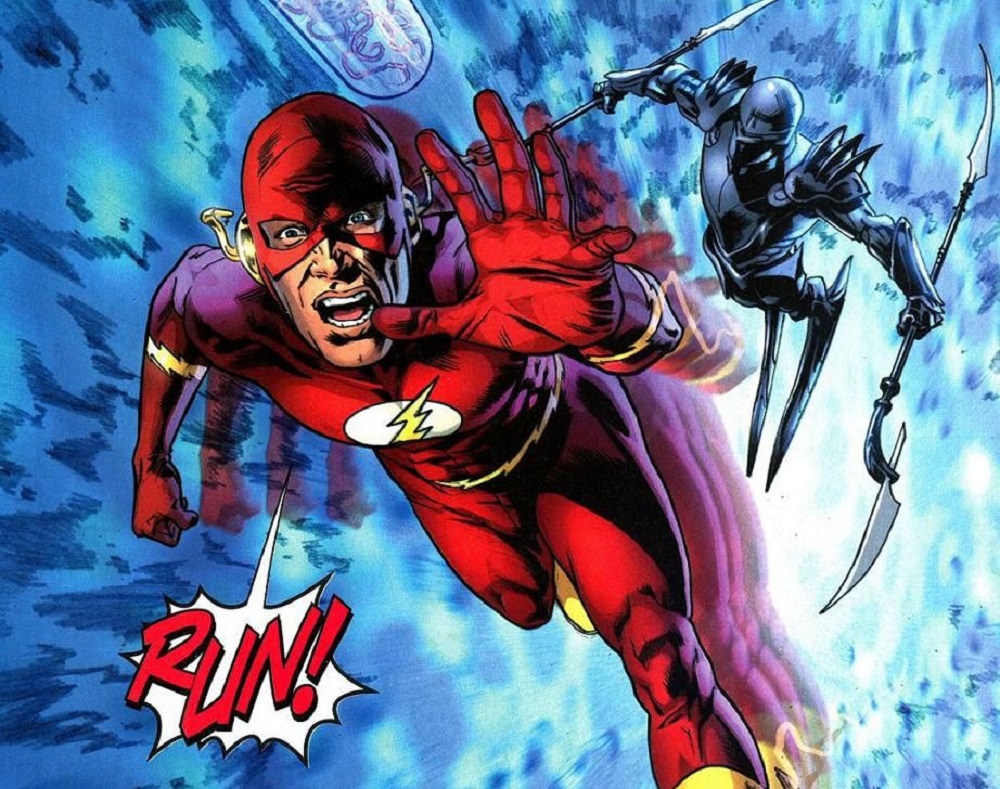“All is one in Darkseid.”
Final Crisis is deeply flawed, yet captivating. It’s head-scratching at times, and at others it’s seemingly far too straightforward. Characters will make grand speeches about the nature of good and evil, followed by a dumb joke. It’s a quiet allegory, but also an action-packed world-ending story. It’s Grant Morrison’s take on the epic, crossover event.
I’m a huge fan of Morrison’s work, particularly his work on Batman which I’ve recently really got into. His Batman and Son and Batman R.I.P collections contain some of the best stories I’ve read around the caped crusader. But he certainly has a style – one that can take some getting used to. His works are often lyrical, metaphorical, and a long way from the literal comic book stories you might expect. He also has a love for the obscure, forgotten characters of the DC universe. I think almost every one of his Batman stories has an appearance from an obscure 70’s character from DC’s back catalogue, one that only Morrison himself seems to remember. When you combine this with a giant crossover event – a form of comics that is rife with problems of its own – you get an understandably tricky story.

The story begins in a big way; with the death of a god. One of the New Gods, to be exact; a race of super powerful heroes created by Jack Kirby in the 70s. This seemingly impossible murder has been perpetrated by none other than Darkseid, who is well on his way to conquering earth. Using something he calls “The Anti-Life Equation”, Darkseid and his minions strip everyone of their free will and enslave them all as servants of the Lord of Apokolips, thus bringing about an end to reality as we know it. It’s up to the heroes of the DC Universe to save the day. But they’re facing issues of their own.
That’s the main thing you’ll notice about Final Crisis, Morrison attempts to tackle so many plot threads at once. After helping in the initial investigation, Batman is taken hostage in Command-D underneath the ruins of Blüdhaven (his time there is covered in Batman #682–683). Superman is sidelined when Lois suffers a near-fatal injury, leading him on a bizarre journey through dimensions. The Flash (all three of them) is busy outrunning The Black Racer, a deity of death who skis through time, killing as he goes. That’s before we even get to what the Justice League and Green Lantern Corps are up to – and that’s only the more popular characters. But to his credit, Morrison manages to (mostly) tie it all together by the end. But it comes at the expense of pretty extreme tonal shifts and huge leaps from narrative to narrative.

Some of these leaps can be excused. Because of the events of the story, time becomes choppy, things lose focus and importance. The format suits that. The problems begin when a character appears on one panel and leaves you wondering if you’re meant to know who that is. Normally in comics, if you’re wondering who that character is and what they’re talking about, you’ve missed a vital tie-in or arc. But here, Morrison is plucking characters out of comics no one remembers and making them integral to the plot. This is fun in its own way, just know going in that you’re not always missing something. It really is that confusing. Once you realise this, you can enjoy the world and story Morrison presents us with.
Some of the issues come down to the format. Firstly, these type of crossover events more often than not collapse under the weight of the massive story they’re trying to tell, focusing more on a collection of characters so that we don’t really care about any one hero. Also the art here is inconsistent. JG Jones drew most of it, but Carlos Pacheco drew issues #4–6 with Jones, and issue 7 was drawn entirely by Doug Mahnke. I don’t mind this all that much, and neither style is worse or better than the other, but I much prefer the art to stay consistent through a story. But that’s another one of the problems of comics I suppose, as is the way this TPB is put together. Between issues #3 and #4, we have the two-part Superman Beyond (detailing Supes’ journey through “the bleed”) and the one-shot Submit, which follows Black Lightning (with feels inconsequential, though I quite liked it). These are integral to understanding the story but kill any cohesive tone.

I started reading this as a continuation of his Batman work. In that regard, it’s not great. Batman sits out of a lot of the story, appearing at the beginning and again towards the end to deliver a wounding blow to Darkseid. But it’s a vital role, one that will have an impact through the following Batman stories I plan to read. And it’s also a shame, because I really like the way Morrison writes Batman, so more of that would have been welcome. But at the very least, it helps me understand the events of The Return of Bruce Wayne a bit more, and it’s led to more of an appreciation to the cosmic side of the DC Universe (even if Darkseid still feels to me like a poor man’s Thanos).
Despite the density of the story (and the extra hours you need to put in on the DC wiki to fully comprehend it) it’s difficult not to be won over by the sheer spectacle and melodrama. There’s something poetic about Morrison’s writing that makes his work extremely enjoyable to me. Things might not make sense literally, but just go with it and embrace it. It’s frustrating but also difficult to stop thinking about once you’ve finished. I guess by that merit, I recommend it. But if you’re interested in Morrison’s work, start with Batman and Son. It’s far more welcoming.
Reviewed by Jack
